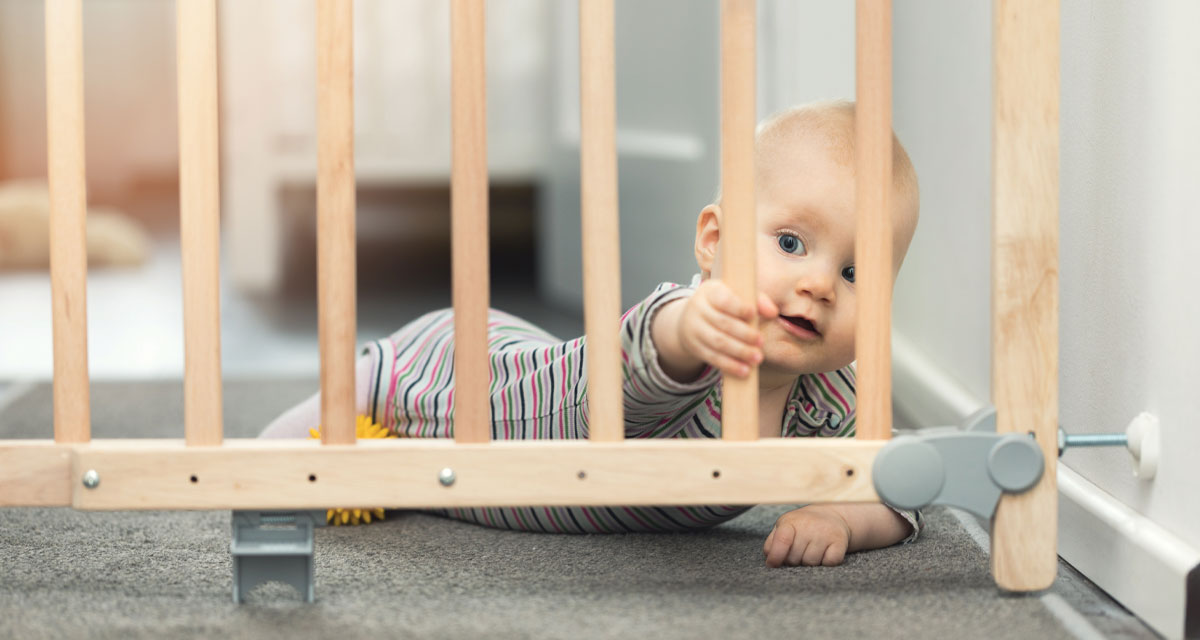Each month this series will provide important facts and tips surrounding child safety, in an effort to support parents and caregivers as they navigate reducing risks and creating the safest environment possible for the children in their lives.
Founded by the Juvenile Products Manufacturers Association (JPMA) in 1983, “Baby Safety Month” occurs annually each September. Whether you are a new mother, a seasoned parent or grandparent, or other caregiver, this month offers a great opportunity to brush up on the latest safety standards and protocols to keep your babies safe!
This month we’ve rounded up some helpful tips across several categories to help give you the education and assurance you need to avoid safety hazards with your little ones.
Newborn and Infant Feeding
Whichever feeding option is best for you and your baby, make sure to follow safety guidelines to ensure they are receiving clean options and enough nutrition to keep them healthy.
If breastfeeding and/or pumping, be sure to wash hands before handling breastmilk and baby.
If you’re having trouble breastfeeding, ask a lactation consultant or your pediatrician for help, especially if feedings are painful or your baby isn’t gaining weight. Don’t microwave breast milk, as it tends to heat up unevenly and can burn your baby, as well as damage the breast milk. Instead, use warm water, testing the temperature before feeding the baby. Always follow the CDC guidelines for proper storage and preparation of breast milk to avoid contamination and illness.
If formula feeding, always be sure to check the “use by” date on the can and store it accordingly. Never water-down formula to make it last longer, as this can be detrimental to your child’s nutrition.
If bottle feeding (breastmilk or formula) you’ll want to sanitize all pump and bottle parts, using hot water and soap, and cleaning thoroughly with a bottle brush. Never “prop feed” (placing bottle against an object to allow for milk to flow without a care holder holding the bottle for baby), as this can be dangerous and increase risks of choking, aspiration, and suffocation.
Safe Sleep Practices
The sleep environment deserves a lot of attention when it comes to safety. Make sure your crib, bassinet, or pack-n-play has a firm mattress and your baby is placed on their back to sleep, as recommended to reduce the risk of Sudden Infant Death Syndrome (SIDs). All sleeping arrangements should be made away from windows to avoid cords or strings that could lead to strangulation. Avoiding crib bumpers, blankets, stuffed animals, low hanging mobiles, and any other items that can reduce airflow is crucial. Utilizing safe sleep products, such as swaddles and sleep sacks, up until their appropriate recommended expiration times or milestones can help keep babies warm and comfortable.
Car Seat Safety
Taking your little one on trips to the pediatrician, to visit family, or to the park for a nice stroller walk? Always have a federally-approved car seat installed, preferably one you can confirm has never been in an accident previously or had any recalls. If you are unsure, have a certified car seat specialist check that you’ve correctly installed your car seat in your vehicle. Some local firehouses provide this service. Infants should be rear-facing in the backseat until two years old or they reach weight and height requirements provided by the manufacturer. Never use aftermarket add-ons that were not originally made for your car seat, as these can impede safety in the event of an accident.
Bath & Water Safety
Bathing your baby can be a beautiful time for bonding, just make sure to pay attention to details. Gather all bath supplies, such as baby wash, towels, washcloth and more, before turning on the water and never leave a baby alone in their bath. Even 1 inch of water can be deadly to an infant. The Mayo Clinic recommends setting your hot water heater below 120 F (48.9 C) to avoid the water temperature getting too hot ever to cause burns. Have a bath thermometer handy to check the water temperature and aim for it to be around 100 F (38 C). Always check the water with your hand before placing your child in the tub, to make sure it feels safe.
Taking Action If Injury or Accidents Occur
When possible, have all immediate caregivers get infant CPR certified in case of an emergency. Always have a First-Aid kit close nearby as well as any important documents or phone numbers with contact information for pediatricians and emergency contacts. If you are unsure about the severity or care of an injury, but have concern, don’t wait to head to your nearest emergency room or call 911.
Helpful Resources to Learn More:
- Juvenile Products Manufacturers Association (JPMA) – www.jpma.org {ONLINE ARTICLE HYPERLINK: https://www.jpma.org/page/baby_safety_month# }
- Center for Disease Control – www.cdc.gov {ONLINE ARTICLE HYPERLINK: https://www.cdc.gov/breastfeeding/recommendations/handling_breastmilk.htm}



















